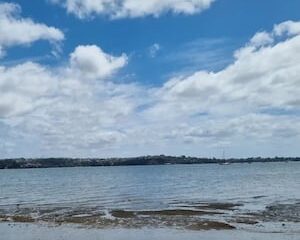Science
Laser Research Project Launches to Study Aerosols in New Zealand

A new atmospheric research project is set to commence on September 3, 2023, at the MetService facility near Invercargill Airport, New Zealand. The initiative, known as goSouth-2, aims to gather critical information on how aerosols—tiny airborne particles—affect atmospheric conditions. This collaborative effort involves institutions from both Germany and New Zealand, including the Meteorological Institute of the University of Leipzig and the Leibniz Institute for Tropospheric Research (TROPOS), alongside local partners such as MetService, the University of Canterbury, and The Air Quality Collective.
As part of the project, five researchers from TROPOS are currently setting up equipment at the site. According to Dr. Patric Seifert, a researcher at TROPOS, aerosols originate from various sources, including natural elements like salt, dust, and pollen, as well as anthropogenic factors such as smoke and volcanic activity. These particles play a crucial role in cloud formation by serving as nuclei for cloud droplets.
The research location at the southern tip of New Zealand offers unique opportunities to study aerosol interactions with clouds, particularly because the region experiences varying atmospheric conditions. Dr. Seifert noted that when air masses flow from the Antarctic, the atmosphere can be exceptionally clean, contrasting sharply with the more polluted air masses that arrive from Australia. Understanding these differences in aerosol levels will provide valuable insights into how clouds respond to changing atmospheric conditions.
Current atmospheric and climate models have struggled to accurately simulate cloud behavior over the Southern Ocean, particularly in comparison to models for the northern hemisphere. Dr. Seifert suggests that the disparities in aerosol concentrations between the two hemispheres could be a contributing factor to this inconsistency. More extensive data has been collected on the northern hemisphere, which is generally more polluted, creating an imbalance in available information for model accuracy.
The Invercargill site was chosen for its logistical advantages, which facilitate effective research operations. MetService has an established history of conducting significant atmospheric observations at this location, including long-term weather balloon soundings and measurements of solar and thermal radiation.
While all the instruments used for data collection will be land-based, residents near Invercargill Airport may notice a green laser beam in the sky. This is part of the lidar (light detection and ranging) systems employed by the researchers to study aerosol distributions. The fixed laser beam has been communicated to airport staff to ensure safety and awareness.
In addition to lidar technology, the research team will also utilize radar systems to monitor clouds and precipitation. The TROPOS team is expected to remain on-site for an 18-month period, with a contingent of approximately 15 researchers analyzing the collected data back in Germany.
The goSouth-2 project follows the success of the earlier initiative, goSouth-1, which took place in 2022 at Pahia, about 50 kilometers from Invercargill. That month-long study provided foundational data, albeit with fewer resources compared to the current project.
This ambitious research endeavor aims not only to enhance scientific understanding of aerosols’ effects on clouds but also to contribute to the broader field of atmospheric science, potentially refining climate models for the Southern Hemisphere.
-

 World1 week ago
World1 week agoPrivate Funeral Held for Dean Field and His Three Children
-

 Top Stories2 weeks ago
Top Stories2 weeks agoFuneral Planned for Field Siblings After Tragic House Fire
-

 Sports3 months ago
Sports3 months agoNetball New Zealand Stands Down Dame Noeline Taurua for Series
-

 Entertainment3 months ago
Entertainment3 months agoTributes Pour In for Lachlan Rofe, Reality Star, Dead at 47
-

 Entertainment2 months ago
Entertainment2 months agoNew ‘Maverick’ Chaser Joins Beat the Chasers Season Finale
-

 Sports3 months ago
Sports3 months agoSilver Ferns Legend Laura Langman Criticizes Team’s Attitude
-

 Sports4 weeks ago
Sports4 weeks agoEli Katoa Rushed to Hospital After Sideline Incident During Match
-

 World2 weeks ago
World2 weeks agoInvestigation Underway in Tragic Sanson House Fire Involving Family
-

 Politics2 months ago
Politics2 months agoNetball NZ Calls for Respect Amid Dame Taurua’s Standoff
-

 Top Stories2 weeks ago
Top Stories2 weeks agoShock and Grief Follow Tragic Family Deaths in New Zealand
-

 Entertainment3 months ago
Entertainment3 months agoKhloe Kardashian Embraces Innovative Stem Cell Therapy in Mexico
-

 World4 months ago
World4 months agoPolice Arrest Multiple Individuals During Funeral for Zain Taikato-Fox




















